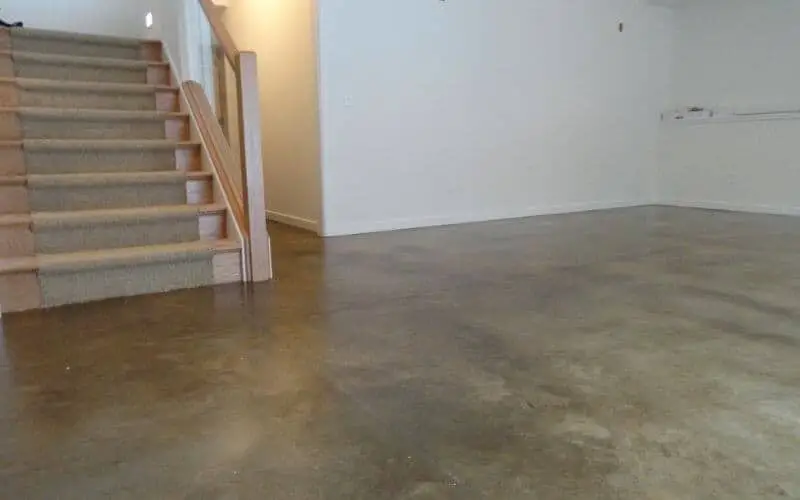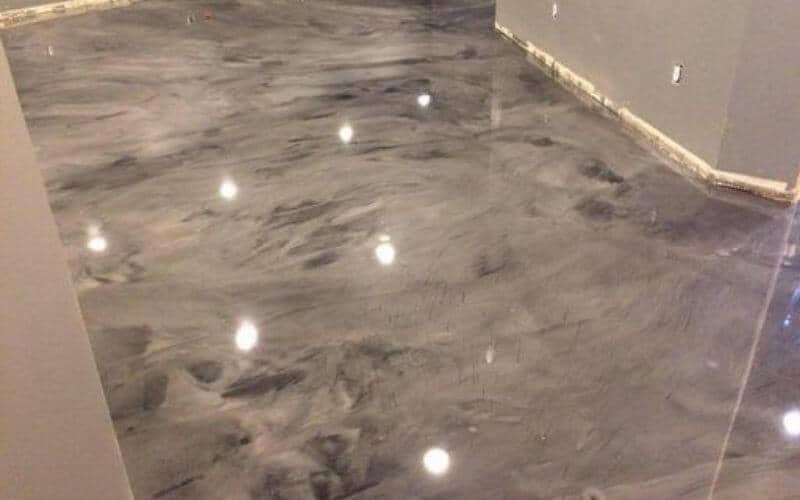Dirt basements are more common in older homes and they were considered to be unused spaces, but nowadays many people who own such houses are looking for ways to maximize such space.
Fortunately, there are different flooring options for dirt basement floors. You can install almost any kind of flooring on a below-grade basement but you need to make sure that they can stand up damp conditions and high humidity.
That leaves you a lot of basement flooring options, like ceramic tile, engineered wood, and laminate flooring made with a moisture-resistant plywood core.
Here’s how to convert your dirt floors on the basement so that the area can be used as an extra living space.
Read: Fixing water in basement where walls meet
Flooring Options For Dirt Basement Floors
Table of Contents
A variety of flooring can be installed on a basement floor, you just need to make sure the floor can withstand high moisture and humidity level, here are some basement flooring ideas;
Epoxy Floor Coatings
If you can live with hard surface flooring, then epoxy floor coating is the right choice for you. It is available in different colors, totally waterproof, and it’s very easy to apply.
Ceramic Tile
This flooring option is also available in different colors and styles. It can withstand moisture and can be installed directly onto smooth and crack-free concrete.
Vinyl Tile and Sheet Flooring
This flooring can also be installed directly over prepared concrete and it can withstand even minor flooding with no damage. Resilient vinyl floor provides underfoot cushioning and is fairly inexpensive to install. Higher-priced vinyl sometimes looks like ceramic tile, real stone, and even wood.
Engineered Wood Flooring
This flooring option gives you the warmth and beauty of real wood but with the stability and moisture resistance of laminate floor.
Engineered wood flooring is usually click-together tiles or planks which are DIY-friendly and easy to install as a floating floor system. However, ensure that the type of flooring you opt for is rated for below-grade basements.
Rubber Flooring
This is available in sheets and DIY-friendly tiles with interlocking edges. You can find them in a variety of colors so you can create your own designs. Rubber floors are cushioned making it a good choice for basement playrooms.
Read: How to clean rubber flooring
Getting the Best Out of your Dirt Basement Floors
Install Vapor Barrier
To protect your basement floor from being damaged by insects and moisture, you need to install a vapor barrier.
Vapor barriers are usually made from foil or plastic sheeting that are resistant to moisture which may come through walls and floor structures, this will prevent the foundation of your home from being compromised or the creation of more humidity on your floor.
When there’s too much moisture and humidity it can penetrate the subflooring of the main level of your house, and damage your wood. This can turn your basement into a breeding ground for insects, mold, and mildew.
Increase Vapor Barrier Effectiveness
You can make your vapor barrier more effective, by identifying moisture problems and fixing them as soon as possible.
You can get a building inspector to check your basement for potential sources of moisture on your sewer and pipelines.
Check for improperly installed drainage and inspect the ground slope outside your home. To prevent your home from being overridden with moisture, the water should be flowing away from your house, this will prevent your home from turning into a collection ground and being damaged.
Pour Concrete
Concrete can be used to create a permanent and low-cost cover for the dirt floor of your basement. Concrete is very effective at keeping dust and moisture out.
It will also keep pests and insects away from the dirt. Concrete flooring is very durable and can last more than a hundred years.
To pour concrete, start by mixing the cement and aggregates on open ground. Then transfer the concrete into the basement using a wheelbarrow. You can also transport concrete with a feed that can be fed through the basement window
If you intend to use your basement area as a living space, you need to check the building codes in your locality for the required height of the ceiling.
You may need to remove some of the dirt on the basement floor in order to meet the ceiling height requirement and to achieve the proper thickness level of the concrete poured on the floor. You also need to ensure that your flooring is level.
Read: How thick can a floor leveler be poured
Finish The Floor
There are various available finishes for concrete floors, like paint, sealant, stain, and tiles. If you want a strong and long-term finish, you should opt for tiles. Unlike linoleum or laminate flooring, porcelain or ceramic tiles can withstand flooding and can last for many years without losing its beauty.
Read: Best way to refinish floors
Conclusion
There are lots of flooring options for dirt basement floors but no matter what flooring you choose, ensure to take the necessary steps needed to keep your basement as dry as possible.
This includes grading out foundation soil so it slopes away from foundation walls to enable water to flow away and not towards the house.
You can also add extensions to your downspouts so water exits at least five feet away from your house. This and many more other steps will prevent your basement from being exposed to high moisture and humidity level.

